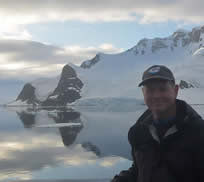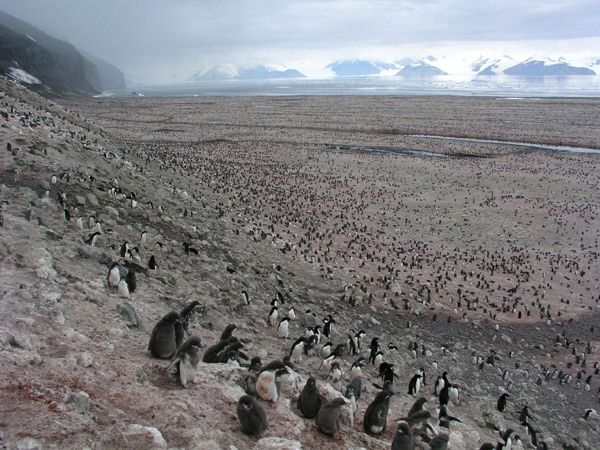Meet the Research Team!

Dr. Steve Emslie (website)
Dr. Steve Emslie is a professor at the University of North Carolina Wilmington (UNCW). His research interests are interdisciplinary and focus on avian ecology and paleoecology, especially on the fossil record of birds in the Plio/Pleistocene and the evolution and extinction of birds in relation to climate change. For the past 19 years he has been studying the paleoecology of penguins in Antarctica with excavations of abandoned penguin colonies to recover bones and prey remains. These remains are providing information on the occupation history and diet of penguins that can be correlated with past population movements and episodes of climate change in this region. Most recently, this research has been expanded to investigate carbon and oxygen isotope records preserved in penguin eggshell from fossil and recent penguin colonies.
Dr. Emslie received his B.A. and M.A. in Anthropology from the University of Colorado. He later received his M.S. in Biology from Northern Arizona University. Then he received his Ph.D. in Zoology from the University of Florida. Dr. Emslie often visits Colorado, but he currrently resides in Wilmington, NC.

Dr. William Patterson
Dr. Patterson is an isotope biogeochemist and director of the Saskatchewan Isotope Laboratory, with field experience on all seven continents, and in many of the World’s marine and lacustrine environments. Patterson’s research interests include global carbon cycling, fish behavior, bat ecology, penguin ecology, woolly mammoth ecology, tree physiology, meteorology, climate change, evolution and extinction, marine and freshwater chemistry, archaeology, anthropology, history, cave environments, etc. His work is conducted in Arctic/Antarctic, alpine, desert, tropical rain and cloud forests, temperate and maritime environments. He has appeared in documentaries on the interpretation of the Bible, agriculture, climate change, fish evolution and behavior, bird behavior, trees physiology, bat ecology, and Viking history. Patterson has developed robotic microsampling devices that are used to extract microgram–sized samples for isotopic analyses, and has published over 100 articles in the scientific literature and magazines.




